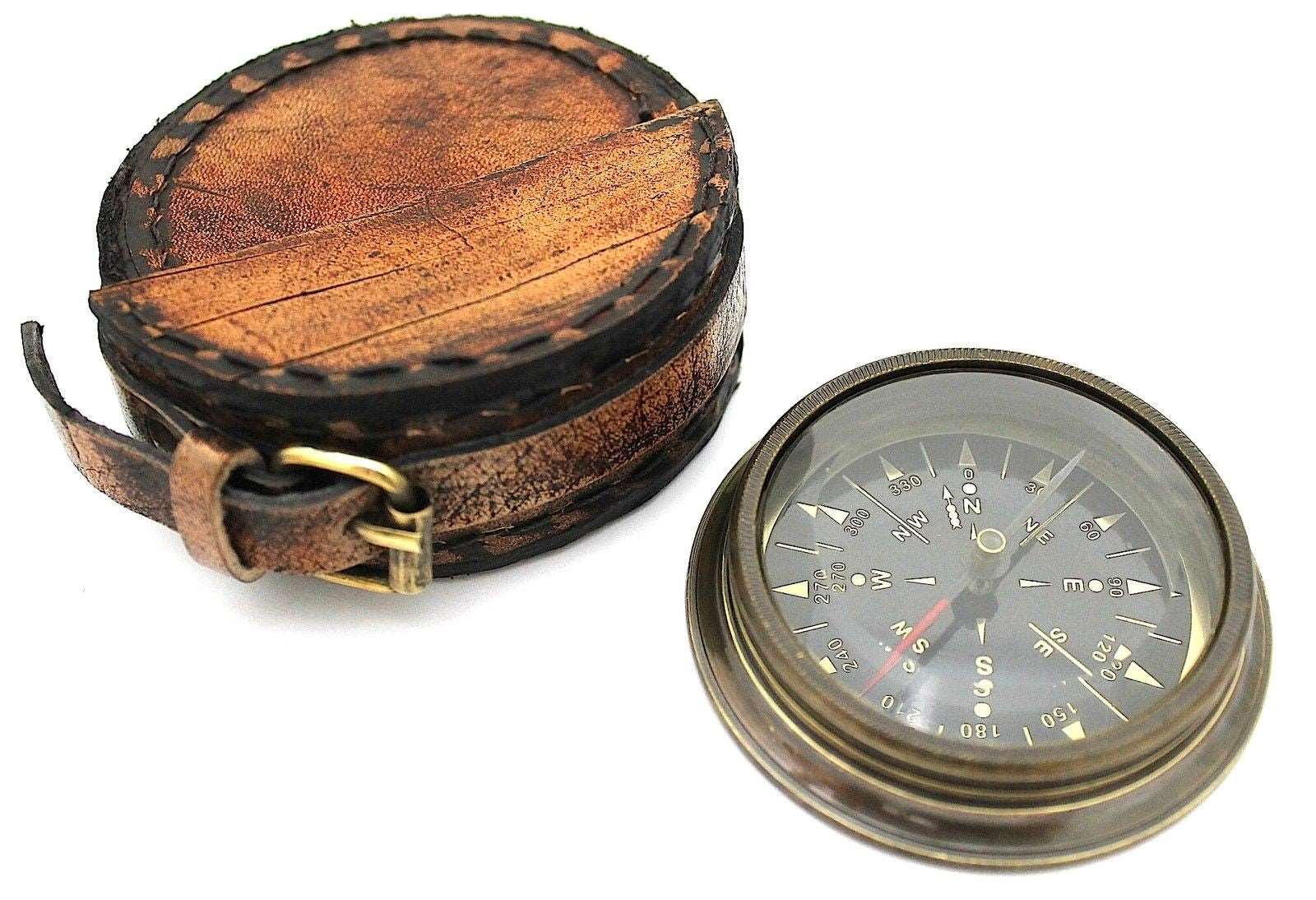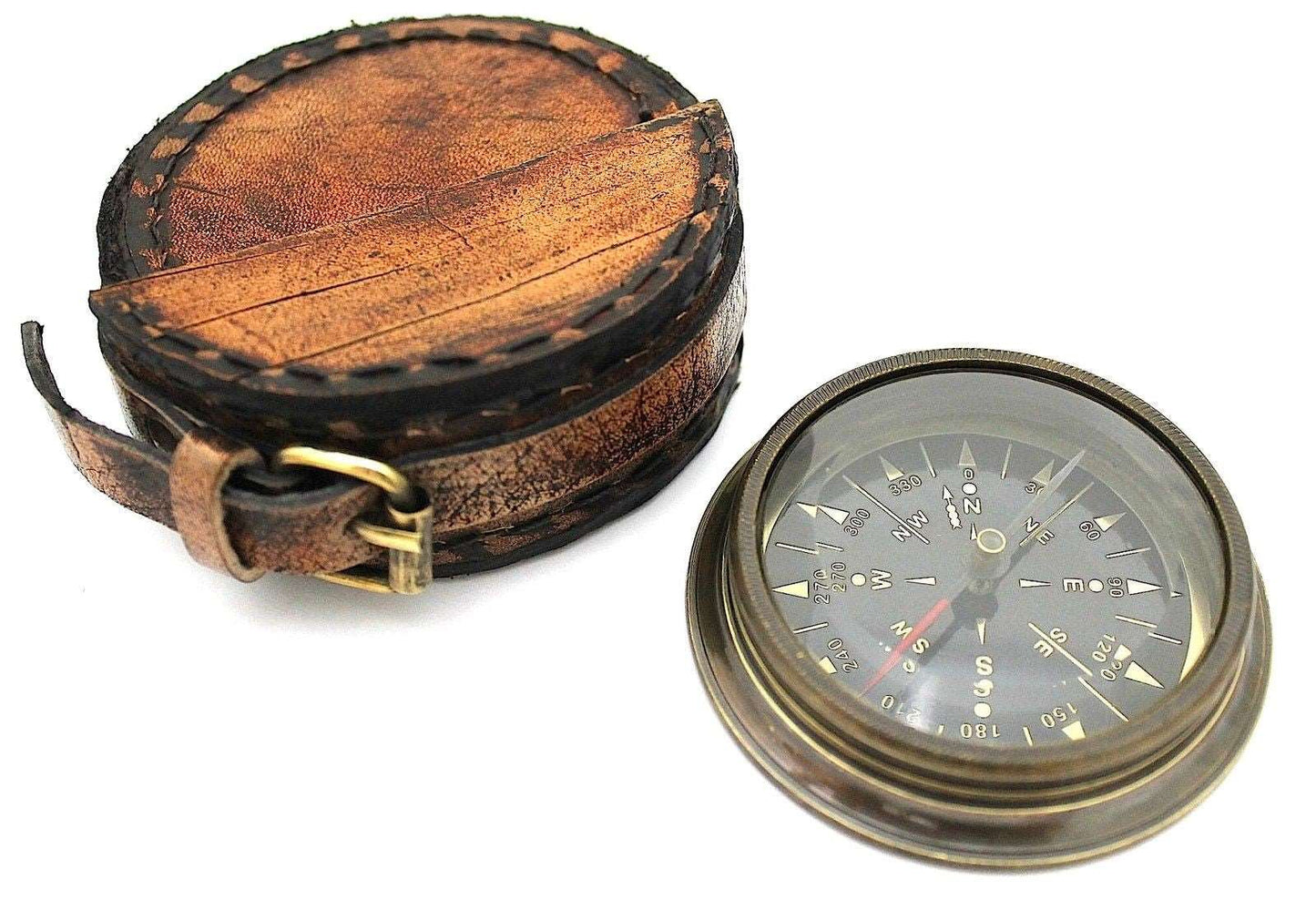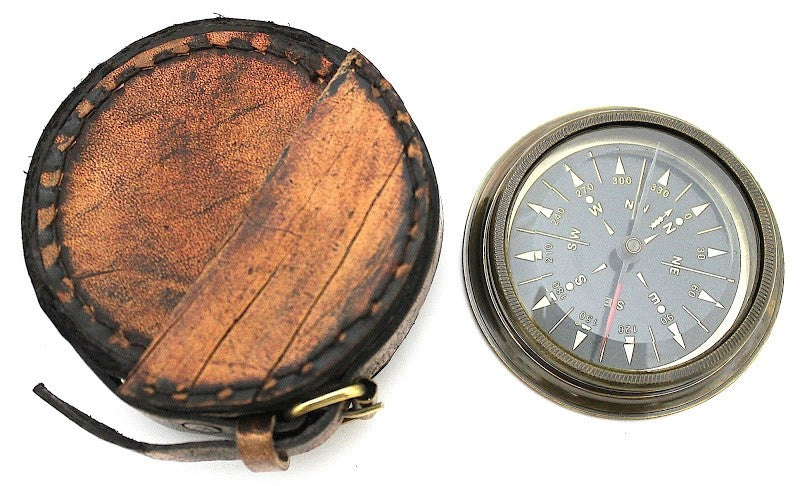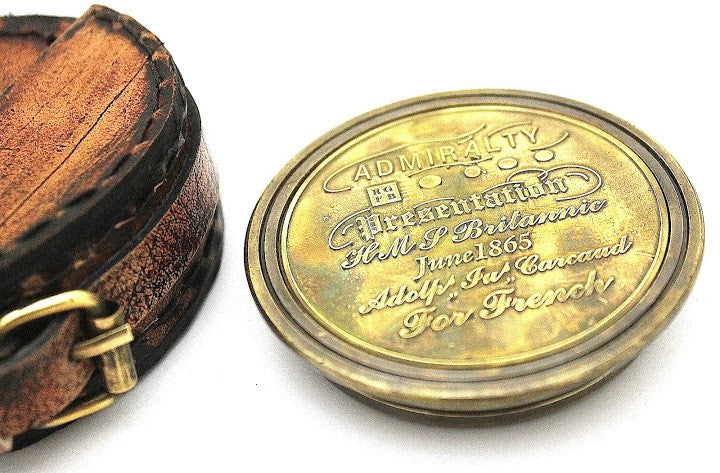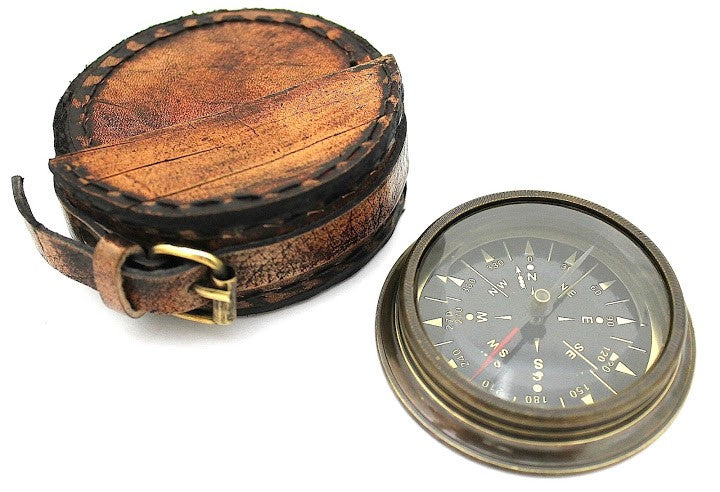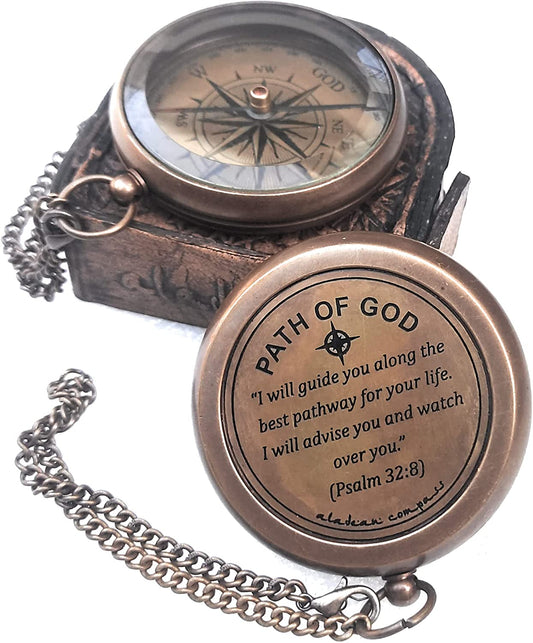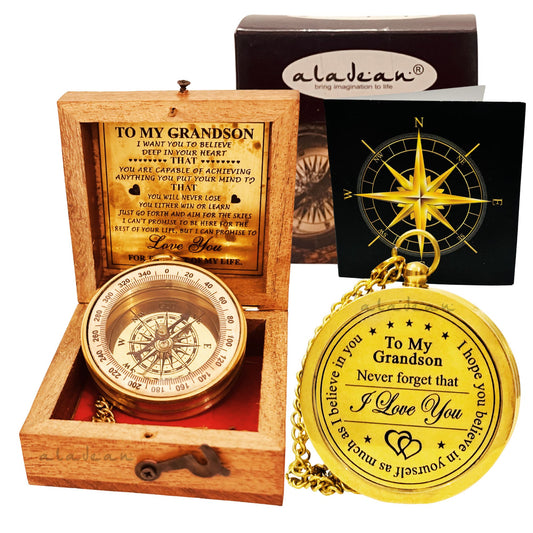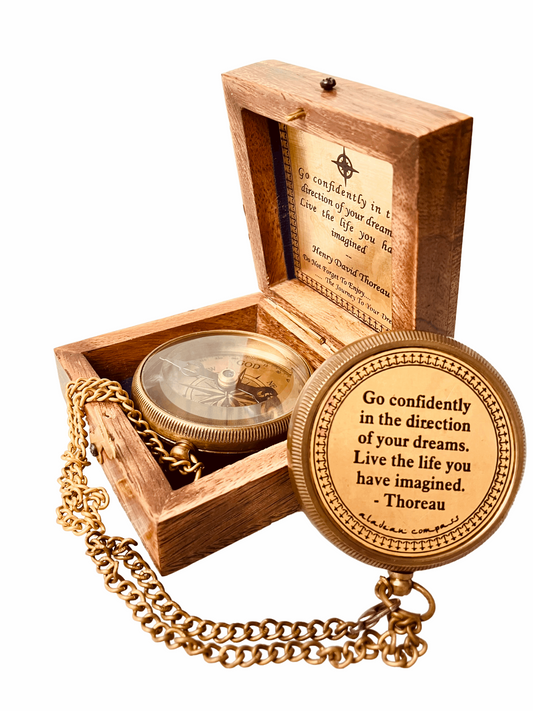Everything You Need to Know About Compasses
Share
Compasses have been indispensable navigational tools for centuries, guiding travelers across uncharted territories and vast oceans. From ancient magnetic needle compasses to modern digital devices, the evolution of compasses is a fascinating journey through history, science, and technology. This comprehensive blog covers various types of compasses, a comparison of their features, the benefits of traditional magnetic needle brass compasses, the historical evolution of compasses, the suitability of brass in compass construction, the physics behind how compasses work, details of famous compasses, the contributions of the British in compass development, and more.
Types of Compasses
1. Magnetic Needle Compasses
These are the most traditional types of compasses, consisting of a magnetized needle that aligns with the Earth's magnetic field to point towards the magnetic north. Check out the traditional brass compasses from Aladean for high-quality examples.
2. Liquid-Filled Compasses
Similar to magnetic needle compasses, but with a liquid-filled housing to stabilize the needle, reducing erratic movement and allowing for more accurate readings.
3. Lensatic Compasses
Commonly used by the military, these compasses have a lens and sighting wire to take precise bearings.
4. Orienteering Compasses
Used in the sport of orienteering, these compasses often come with a transparent baseplate and a rotating bezel to facilitate map reading.
5. Gyrocompasses
These non-magnetic compasses find true north using a fast-spinning gyroscope and are unaffected by external magnetic fields.
6. Digital Compasses
Integrated into modern smartphones and GPS devices, these compasses use electronic sensors to determine direction.
7. Astrocompasses
Used for navigation by the stars, these compasses are aligned with celestial bodies instead of the Earth's magnetic field.
Comparison Chart of Compass Features
| Type of Compass | Magnetic Field-Based | Liquid-Filled | Sighting Mechanism | Map Reading Aid | Digital Sensors | Gyroscope | Celestial Navigation |
|---|---|---|---|---|---|---|---|
| Magnetic Needle | Yes | No | No | No | No | No | No |
| Liquid-Filled | Yes | Yes | No | No | No | No | No |
| Lensatic | Yes | Yes | Yes | No | No | No | No |
| Orienteering | Yes | Yes | No | Yes | No | No | No |
| Gyrocompass | No | No | No | No | No | Yes | No |
| Digital | No | No | No | No | Yes | No | No |
| Astrocompass | No | No | No | No | No | No | Yes |
Benefits of a Traditional Magnetic Needle Brass Compass
1. Reliability
Traditional magnetic needle brass compasses do not rely on batteries or electronic components, making them reliable in any condition, including emergencies where power sources are unavailable.
2. Durability
Brass is corrosion-resistant and highly durable, ensuring that the compass remains functional over long periods and in harsh environments.
3. Precision
A well-calibrated magnetic needle compass offers high precision, crucial for accurate navigation. For instance, this antique brass sundial compass from Aladean combines historical charm with precision.
4. Simplicity
These compasses are straightforward to use, with no need for software updates or technical knowledge.
5. Aesthetic Value
Brass compasses often feature elegant designs and craftsmanship, making them collectible items and attractive gifts. Check out Aladean's collection for beautifully crafted brass compasses.
Historical Evolution of Compasses
Ancient Times
The first compasses were believed to be used by the Chinese around the 2nd century BC, using lodestone, a naturally magnetized mineral. These early compasses were primarily used for geomancy and divination rather than navigation.
Middle Ages
By the 12th century, magnetic compasses were adopted by Arab navigators and traders, and eventually by Europeans. This period saw the development of the dry compass, which had a pivoted needle on a pin.
Renaissance
The Renaissance era brought significant improvements in compass design, including the addition of the compass card. These improvements enhanced navigational accuracy and reliability, fostering the age of exploration.
Modern Era
The 19th and 20th centuries saw the advent of liquid-filled compasses and the gyrocompass, which uses gyroscopic principles to find true north. The late 20th century introduced digital compasses integrated into GPS devices, revolutionizing navigation.
Why Brass is Ideal for Any Compass
1. Corrosion Resistance
Brass is highly resistant to corrosion, especially from seawater, making it ideal for maritime navigation tools.
2. Durability
Brass is a durable metal that can withstand physical wear and tear, ensuring the longevity of the compass.
3. Malleability
Brass can be easily molded and engraved, allowing for detailed and precise manufacturing of compass components. For example, Aladean offers a beautifully engraved "Path of God" brass compass.
4. Aesthetic Appeal
Brass has a timeless, classic look that adds a touch of elegance and tradition to compasses. Aladean's engraved compasses make perfect gifts due to their aesthetic appeal and inspirational messages.
The Physics Behind a Compass
A compass works on the principle of magnetism. The Earth itself acts like a giant magnet with a magnetic field that extends from the magnetic north to the magnetic south poles. A compass needle is a small, lightweight magnet that can rotate freely. When the needle is placed in the Earth's magnetic field, it aligns itself with the field lines, pointing towards the magnetic north.
Key Concepts
- Magnetic Declination: The angle between magnetic north and true north. This varies depending on your geographic location.
- Magnetic Inclination: The angle made with the horizontal by the Earth's magnetic field lines. It varies with latitude.
- Magnetization: The process by which a material (in this case, the needle) becomes magnetized when exposed to a magnetic field.
Famous Compasses and Their Stories
1. John Harrison's Marine Chronometer
While not a compass, John Harrison's marine chronometer was crucial for solving the problem of longitude. It enabled navigators to determine their position at sea with unprecedented accuracy.
2. Lewis and Clark's Compass
The compass used by the explorers Lewis and Clark during their expedition across North America in the early 19th century was essential in mapping the uncharted territories of the United States.
3. James Cook's Compass
Captain James Cook used a Kater's Compass, a type of marine compass, during his voyages in the Pacific. This compass played a key role in his successful navigation and charting of previously unknown areas.
4. Shackleton's Compass
Sir Ernest Shackleton’s compass guided his perilous journey across the Antarctic during the famous Endurance expedition. This compass is emblematic of survival and exploration against the odds.
Contribution of the British in Compass Development
The British have made significant contributions to the development of the compass. In the 18th and 19th centuries, British inventors and navigators refined compass technology, making it more reliable for maritime navigation.
1. Edmund Halley
Halley, an astronomer, and navigator created detailed magnetic declination maps, improving the accuracy of compass readings across different parts of the world.
2. George Everest
Sir George Everest, Surveyor General of India, utilized advanced compasses in the Great Trigonometric Survey of India, which greatly contributed to accurate mapping and navigation.
3. Lord Kelvin
William Thomson, 1st Baron Kelvin, invented the Kelvin's Compass, a type of marine compass that was less affected by the iron hulls of ships, enhancing navigational precision.
Finally
Compasses have evolved from simple lodestones to sophisticated digital devices, yet the traditional magnetic needle brass compass remains a symbol of timeless reliability and craftsmanship. Understanding the different types of compasses, their historical development, and the physics behind them provides valuable insight into their enduring significance in navigation. Brands like Aladean continue to preserve and celebrate this heritage, offering beautifully crafted brass compasses that serve both practical and aesthetic purposes. Whether you're an adventurer, a history enthusiast, or a collector, the compass is an instrument that encapsulates the spirit of exploration and discovery.

